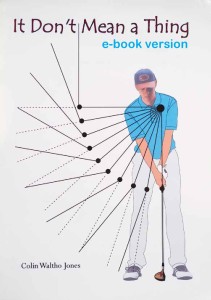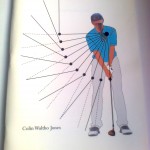June 15th
It’s back. OMG, what a relief! I love playing well. I love being a skip and playing well. I love it with the identical intensity that I hate being a skip and not playing well. And it is so easy. I’m always staring straight at it but it always takes a few games before I can see it. And then when I do see it I get mad because it feels as if I have needlessly suffered the anguish of playing badly and all the memories it dredges up.
It goes like this. First, you have to “get” the swing. For me it’s been years since I discovered the “timing” swing and so even after 6 months’ hibernation it comes back quite quickly. Next comes the visualising; that takes a bit longer to return. Initially, the anxiety about the swing gets in the way, and then you need a bit of meaningful competition – that is, the threat of humiliation – to get the imagination revved up. The result is that the visualisation comes back in fits and starts, which makes what happens next inevitable. And what happens next is the really annoying bit.
You see, the swing starts to function consistently quite quickly after the re-start to the season, and quite soon after that the visualisation makes occasional appearances. When they happen to coincide, that feeling of being in control of the bowl returns and it is exciting, and intoxicating, and can make a man dream. The dream is simple: it is that all the bowls you ever bowl are like that last one. So, naturally, thoughts turn to what exactly made that last bowl so perfect, and it is at this very juncture that my inglorious sporting past has its annual period of revenge over its conqueror. Because, season after season, just a few weeks in, my mind will go looking for a solution to the bad woods and it will by default concentrate initially on the physical because, I suppose, it is the physical I spent so long trying to solve. And as soon as I start looking at the physical for a solution I return very quickly to being the bowler I was before I solved “timing”: useless.
It is always stuff like “stand still”, “let your arm swing beneath your shoulder”, “hold the wood lightly”, “don’t allow too much flexion in the wrist”, “don’t forget to bowl on the out-breath” and on, and on, and on, until you get to the point that the only description that does any justice to how I’m feeling standing on a mat trying to get a bowl to go anywhere near where I want it to go is a pregnant giraffe on stilts.
It’s not as if I haven’t written at considerable length about the need to specifically NOT fiddle with the physical elements of the swing. It’s not as if I haven’t devoted a considerable portion of my intellectual problem-solving energy to disentangling the complex relationship between conscious and sub-conscious, just so that the player has a practical, unbreakable, intellectually rigourous modus operandi. And yet still, year after year, at that moment in time when the physical has flown in to its summer residence, and the mental has hologramatically re-formed, and the bowls are starting to hit the spots, and the perennial pursuit of pointless perfection is edging its way to the top of the dominating drives list – jostling with nourishment, parenting and future financial security – my brain latches on to some physical tic, some bodily gimmick as if this time it is definitely the “answer”, the new “swing Messiah”. Oh, it is so tiresome.
And all the time the real solution is staring me in the face. In fact, it is only when the humiliation of being useless is at its most exquisite, like the pain from an acne spot as your fingernail presses a divide-line down its middle, when the uselessness is so useless that it becomes comic, it is only then that I finally notice it. And then I’m overwhelmed with relief, and a sense of profound obtuseness.
So what is the “it”? The “it” is that at the moment when the swing is about to start its journey back to the target you have to resist every urge to consciously interfere by forcing a particular movement, and you have to resist by hanging on to the visualisation that you established moments earlier. In practice, at the moment when you most want to “do” something, you have to do nothing. Or, sloganising, “Don’t make it happen, LET it happen!”.
It’s not much of an “it”, and for the life of me I don’t know why it is so hard to remember. It’s not even that hard to do once you get addicted to the results it produces.
But, make no mistake, this “it” is it. It is the link between the physical and mental that defines sport as a human activity. It is where the intense personal pleasure that can be derived from sport resides. Of course, it is also where the anguish lives too.
“Don’t make it happen, LET it happen!”. Write it on your palm before you go out to play. It’s magic.



No comments yet.